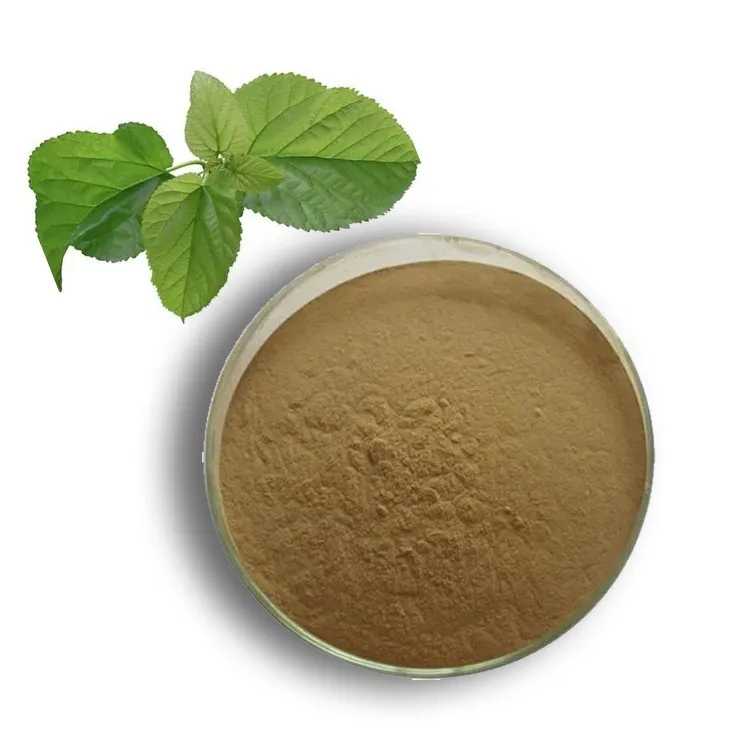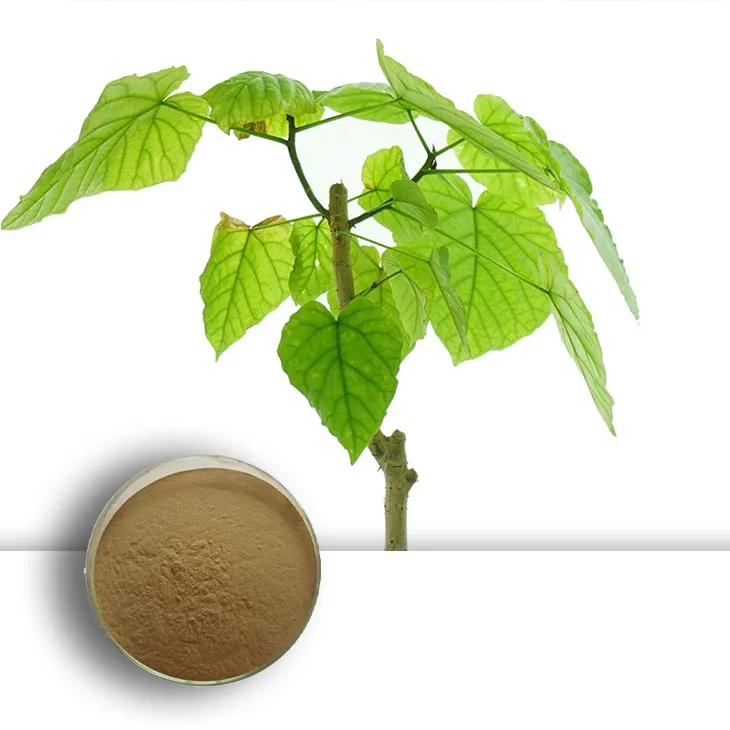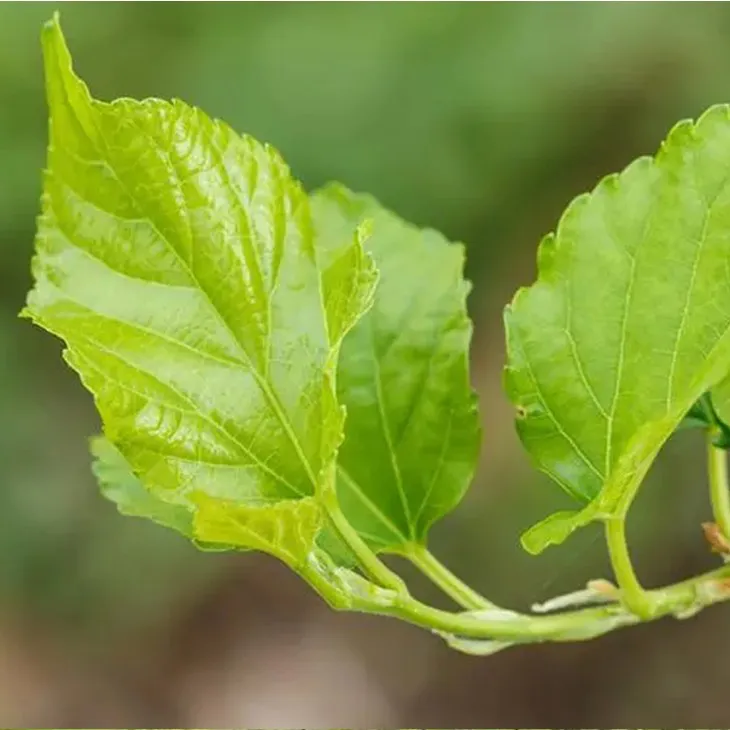- 0086-571-85302990
- sales@greenskybio.com
Mulberry Leaf Extract: China vs. the United States
2024-11-30

1. Introduction
Mulberry leaves have been known for their various beneficial properties for centuries. They are rich in nutrients and bioactive compounds, making their extract a subject of great interest in both China and the United States. China, with its long - standing history of using mulberry in traditional medicine and silk production, has a deep - rooted knowledge of mulberry leaves. The United States, on the other hand, with its advanced biotechnology and research infrastructure, is exploring the potential of Mulberry leaf Extract from a modern scientific perspective. This article will compare and contrast how these two countries engage with Mulberry leaf Extract.

2. China's Engagement with Mulberry leaf Extract
2.1. Historical and Traditional Use
In China, mulberry leaves have a history of over 5,000 years in traditional medicine. They were used to treat various ailments such as fever, inflammation, and diabetes. Traditional Chinese Medicine (TCM) practitioners believed that mulberry leaves have a "cooling" effect on the body, which helps in balancing the body's internal environment. For example, in the treatment of diabetes, mulberry leaf extract was often used as part of a herbal formula to help regulate blood sugar levels.
2.2. Extraction Techniques in China
China has developed a variety of extraction techniques for mulberry leaf extract. One common method is solvent extraction, where solvents such as ethanol or water are used to extract the active compounds from the leaves. Another technique is supercritical fluid extraction, which uses supercritical carbon dioxide as the extraction medium. This method is considered more environmentally friendly and can produce a high - quality extract with a relatively pure composition. Chinese researchers are constantly exploring and optimizing these extraction techniques to improve the yield and quality of the extract.
2.3. Applications in China
- Food and Beverage Industry: Mulberry leaf extract is used in the production of functional foods and beverages. For instance, it is added to tea products, providing consumers with additional health benefits. Mulberry leaf tea is popular in China for its potential to lower blood sugar and cholesterol levels.
- Traditional Chinese Medicine: As mentioned before, it is an important ingredient in many TCM prescriptions. It can be combined with other herbs to treat a wide range of diseases.
- Cosmetics: The antioxidant properties of mulberry leaf extract make it suitable for use in cosmetics. It can be found in skin - care products such as creams and lotions, helping to protect the skin from oxidative damage and aging.

3. The United States' Engagement with Mulberry Leaf Extract
3.1. Research Focus on Health Benefits
In the United States, there is a significant focus on the health benefits of mulberry leaf extract, especially in relation to antioxidant and anti - diabetic properties. Researchers are using modern scientific methods to study how the bioactive compounds in mulberry leaves interact with the human body. For example, studies have been conducted to investigate the role of mulberry leaf extract in reducing oxidative stress, which is associated with many chronic diseases such as heart disease and cancer. In the context of diabetes, research is focused on understanding how the extract can improve insulin sensitivity and regulate blood glucose levels.
3.2. Advanced Research Facilities and Techniques
The United States is well - equipped with advanced biotech research facilities. These facilities enable in - depth analysis of mulberry leaf extract at the molecular level. Techniques such as high - performance liquid chromatography (HPLC) and mass spectrometry are used to identify and quantify the bioactive compounds in the extract. This allows for a more precise understanding of the composition of the extract and its potential mechanisms of action. Moreover, American researchers often collaborate with international partners to share knowledge and resources in the study of mulberry leaf extract.
3.3. Applications in the United States
- Dietary Supplements: Mulberry leaf extract is commonly found in dietary supplements in the United States. These supplements are marketed towards individuals who are interested in managing their blood sugar levels or improving their overall health. The extract is often combined with other nutrients and herbs to enhance its effectiveness.
- Pharmaceutical Research: Some pharmaceutical companies in the United States are exploring the potential of mulberry leaf extract as a basis for developing new drugs. The anti - diabetic properties of the extract are of particular interest, and researchers are working on isolating and purifying the active compounds for further drug development.

4. Differences in Engagement
4.1. Research Approaches
China's research on mulberry leaf extract is often influenced by its traditional medicine knowledge. It tends to focus on the overall efficacy of the extract in treating various diseases as described in TCM. In contrast, the United States' research is more based on modern scientific principles, aiming to understand the specific molecular mechanisms underlying the health benefits of the extract. For example, while Chinese researchers may study the effect of mulberry leaf extract on diabetes as part of a holistic treatment approach, American researchers are more likely to investigate the specific biochemical pathways involved in blood glucose regulation by the extract.
4.2. Application Emphasis
In China, the application of mulberry leaf extract is more widespread across different industries, including food, medicine, and cosmetics. There is a stronger emphasis on its traditional uses and integration into daily life. In the United States, the focus is more on the health - related applications, especially in the areas of dietary supplements and potential pharmaceutical development. This difference in emphasis is also reflected in the marketing and consumer perception of mulberry leaf extract in the two countries.
4.3. Regulatory Environments
The regulatory environments for mulberry leaf extract in China and the United States are different. In China, the regulation of traditional medicine and its ingredients is based on a long - established system that takes into account historical use and safety data. For mulberry leaf extract used in food and cosmetics, there are specific quality and safety standards. In the United States, the regulation of dietary supplements and potential drugs derived from mulberry leaf extract is more complex. Dietary supplements are regulated under the Dietary Supplement Health and Education Act (DSHEA), which has different requirements compared to drugs. Pharmaceutical development from natural products like mulberry leaf extract requires strict compliance with the regulations of the Food and Drug Administration (FDA).
5. Similarities in Engagement
5.1. Recognition of Health Benefits
Both China and the United States recognize the potential health benefits of mulberry leaf extract. There is a growing body of research in both countries that supports its antioxidant, anti - diabetic, and other beneficial properties. This shared recognition has led to increased interest in further exploring and developing the use of the extract.
5.2. Exploration of New Applications
In both countries, researchers are constantly exploring new applications for mulberry leaf extract. Whether it is in the field of medicine, food, or cosmetics, there is an ongoing effort to find innovative ways to utilize the extract. For example, in both China and the United States, there is research into using mulberry leaf extract in the development of novel functional foods with enhanced health - promoting properties.
6. Conclusion
In conclusion, China and the United States have different yet complementary approaches to mulberry leaf extract. China's rich traditional knowledge and diverse applications coexist with the United States' advanced research techniques and focus on specific health benefits. The differences in their engagement are shaped by historical, cultural, and scientific factors. However, both countries also share similarities in recognizing the potential of the extract and exploring new applications. As the global interest in natural products continues to grow, further collaboration between China and the United States in the field of mulberry leaf extract could lead to more comprehensive understanding and better utilization of this valuable natural resource.
FAQ:
1. What are the main extraction techniques of mulberry leaf extract in China?
In China, common extraction techniques for mulberry leaf extract include solvent extraction. For example, using ethanol as a solvent to extract active components from mulberry leaves. Another method is water extraction, which is more in line with the concept of traditional Chinese medicine extraction. Through boiling mulberry leaves in water, certain water - soluble components can be obtained. Additionally, modern extraction technologies such as supercritical fluid extraction are also being explored in China to improve the extraction efficiency and quality of mulberry leaf extract.
2. How does the United States study the antioxidant properties of mulberry leaf extract?
In the United States, researchers use advanced laboratory techniques. They may conduct in - vitro experiments, such as culturing cells and exposing them to mulberry leaf extract to observe the changes in oxidative stress markers. They also use biochemical assays to measure the levels of antioxidant enzymes and free radical scavenging capacity in samples treated with mulberry leaf extract. Moreover, animal models are often employed to study the in - vivo antioxidant effects of mulberry leaf extract, which helps to better understand its potential role in preventing oxidative - related diseases.
3. What are the traditional applications of mulberry leaf extract in China?
In China, mulberry leaf extract has a long history of traditional applications. It has been used in traditional Chinese medicine for treating various diseases. For example, it is used for relieving fever and cough. In the field of health preservation, it is often made into tea for people to drink, which is believed to have the functions of clearing heat and detoxifying, and moistening the lungs. It is also used in some traditional Chinese medicine prescriptions in combination with other herbs to enhance the overall curative effect.
4. How does the United States explore the anti - diabetic properties of mulberry leaf extract?
The United States typically uses scientific research methods at the molecular and cellular levels to explore the anti - diabetic properties of mulberry leaf extract. Researchers may study how the extract affects insulin signaling pathways in cells, whether it can improve insulin sensitivity. In vivo studies using diabetic animal models are also common. They monitor blood glucose levels, insulin levels, and other related physiological indicators in these animals after treatment with mulberry leaf extract to evaluate its anti - diabetic effects.
5. Are there any differences in the quality control of mulberry leaf extract between China and the United States?
Yes, there are differences. In China, quality control of mulberry leaf extract often adheres to traditional Chinese medicine quality standards as well as modern pharmacopoeia standards. It pays attention to factors such as the origin of mulberry leaves, the extraction process, and the content of main active components. In the United States, more emphasis is placed on modern scientific analysis methods, such as using high - performance liquid chromatography (HPLC) to accurately measure the content of specific bioactive compounds in mulberry leaf extract, and strict compliance with relevant FDA regulations for dietary supplements or pharmaceutical - grade products.
Related literature
- Mulberry Leaf Extract: Traditional and Modern Perspectives in China"
- "Antioxidant Properties of Mulberry Leaf Extract: Insights from US Biotech Research"
- "The Anti - Diabetic Potential of Mulberry Leaf Extract: A Comparative Study between China and the United States"
- ▶ Hesperidin
- ▶ Citrus Bioflavonoids
- ▶ Plant Extract
- ▶ lycopene
- ▶ Diosmin
- ▶ Grape seed extract
- ▶ Sea buckthorn Juice Powder
- ▶ Fruit Juice Powder
- ▶ Hops Extract
- ▶ Artichoke Extract
- ▶ Mushroom extract
- ▶ Astaxanthin
- ▶ Green Tea Extract
- ▶ Curcumin
- ▶ Horse Chestnut Extract
- ▶ Other Product
- ▶ Boswellia Serrata Extract
- ▶ Resveratrol
- ▶ Marigold Extract
- ▶ Grape Leaf Extract
- ▶ New Product
- ▶ Aminolevulinic acid
- ▶ Cranberry Extract
- ▶ Red Yeast Rice
- ▶ Red Wine Extract
-
Chasteberry Extract
2024-11-30
-
Polygonum multiflorum extract
2024-11-30
-
Sugarcane Extract
2024-11-30
-
melatonin extract
2024-11-30
-
Artichoke Extract
2024-11-30
-
Motherwort Extract
2024-11-30
-
Grapefruit Seed Extract Powder
2024-11-30
-
Curcuma Longa Extract/Turmeric extract
2024-11-30
-
Genistein
2024-11-30
-
Andrographis Paniculata Extract Powder
2024-11-30





















